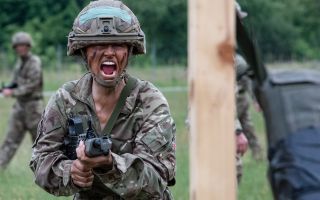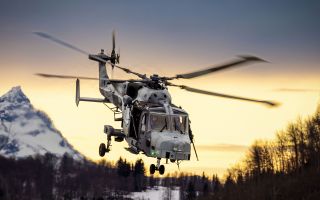Introduction of AI set to revolutionise Ukraine's drone-dominated battlefield
Since Russia's invasion of Ukraine, one weapon has dominated the battlefield – First Person View (FPV) drones.
Used by both sides to deadly effect, the drone technology has rapidly advanced during the conflict and could now see yet another evolution.
Experts have said the introduction of artificial intelligence will ensure another huge technological leap in drone technology on the Ukrainian battlefield.
AI could, with the aircraft themselves 'seeing' the battlefield below, allow them to navigate their own route and even visually acquire particular targets.
This terminal guidance, as it's called, effectively turns drones into precision-guided missiles and operators won't have to sit with FPV goggles and guide the drone – it will do it by itself.
David Gambling, author and drone technology expert, told Forces News this is a "game changer" because it means drones will not need GPS, which is capable of being jammed, to navigate the battlefield.
"If you've got an optical navigation system, one that's navigating by looking at waypoints on the ground below, that doesn't need GPS, it just needs, an onboard map and a little bit of intelligence, and it can find its way," he said.
"If the operator can pick up the target and hone in on it from, say, a kilometre away, that basically means that pretty much all jammers, which have much shorter range than that, then have no effect and the drone can just carry on and hone in on the target and destroy it."
This capability also means that on the horizon in Ukraine is the use of swarming drones.
This could see groups of AI-powered UAVs linking together to launch simultaneous attacks.
Mr Gambling said if you have "got a sophisticated swarm software, you can start doing very advanced things indeed".
"You can have a swarm that will fly over an area, detect the number of targets, and then decide amongst itself how many drones need to attack which targets while other drones circle around waiting to see the results of that," he said.
"I believe we are going to see swarming of some sort in the next six months – certainly by the end of the year."
This is not the only advancement in technology.
Drones are being programmed to hit particular weak spots on vehicles and intercept other drones.
But it is not just attacking roles that AI drones will fulfil – they can also carry out surveillance missions.
This will see them flying over the battlefield, looking for any disturbance that might indicate enemy positions, a task previously done by multi-million-pound spy planes.
For all militaries, the stress on soldiers of this constant overhead threat is only going to increase as drones become more sophisticated.
In Ukraine, the effect on Russian infantry has been stark.
While Russia has a huge advantage in conventional weaponry, drone technology, and this new frontier of AI, is an area where Ukraine may well be ahead – outsmarting where it can't outgun Moscow's forces.
Humans will still decide what the drones target, but increasingly smart-thinking drones will decide how they get there, and how they attack.









